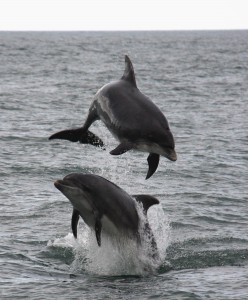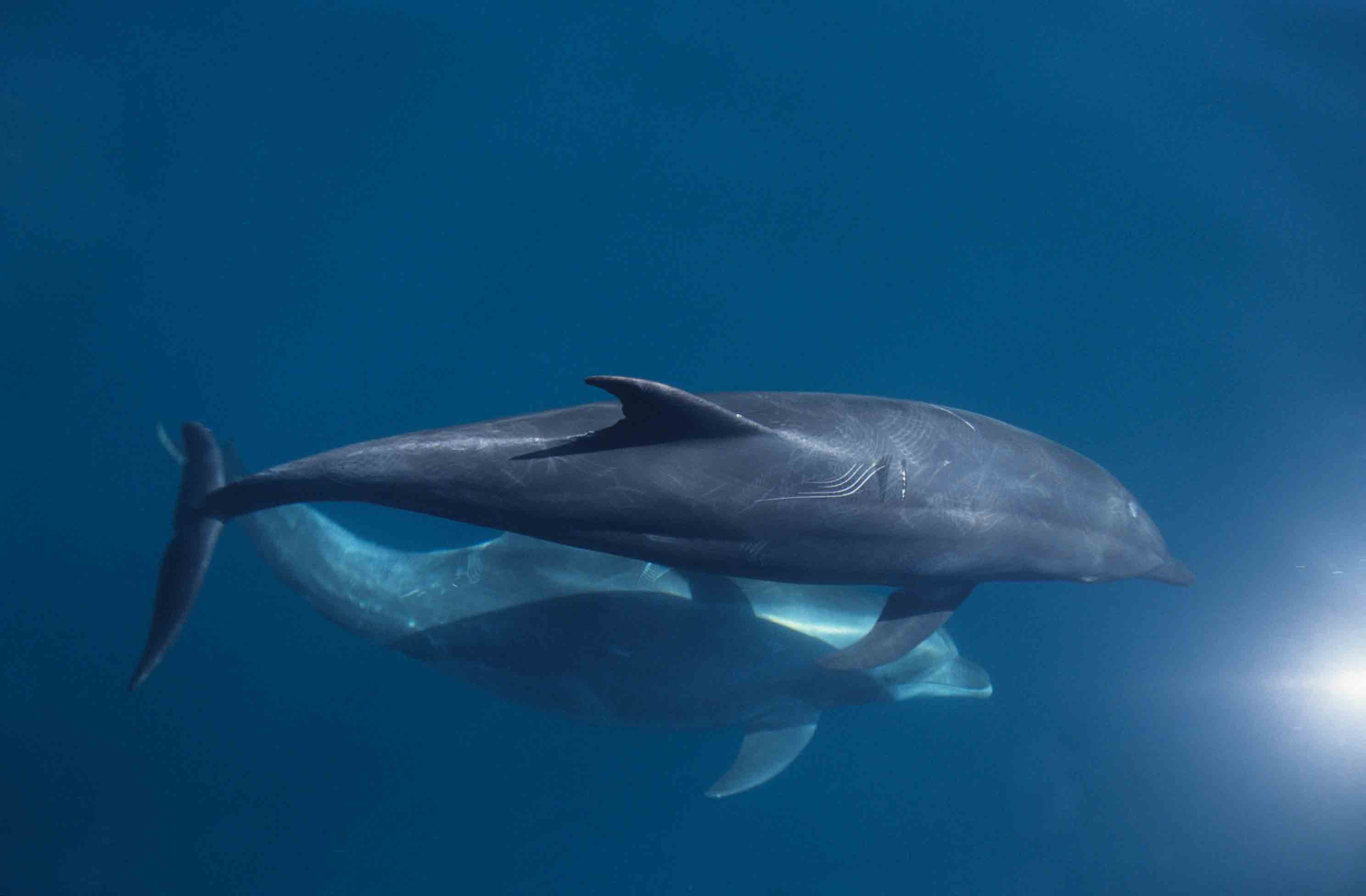If it hadn’t escaped your notice it’s Valentine’s Day and we’re here to offer dating advice from the underwater world of the dolphins! With a lone common dolphin currently residing in New Quay Bay, West Wales, one of our Welsh Sea Watchers has decided to explore the bonds between dolphins and why sometimes they lead a solitary existence…
Valentine’s Day; a dream for some and nightmare for others. Lucky for cetaceans such as the dolphin these are awkward occasions they can avoid! That’s not to say they don’t have their own problems in love. Just like us, these incredible animals have complicated social structures and that means relationships form and relationships break. These relationships are quintessential to the survival of these animals. They provide benefits in hunting, mating and even defence of the pods.
Dolphins are known for their playfulness and it’s these interactions that form lasting relationships between individuals. Research has shown through play and interaction, foundations are formed in which enables the individuals to recognise others within social groups. Pods will even congregate in large groups (known as herds) in order to, again, socialise with other animals.
The first relationship a young dolphin will encounter is that between itself and its mother, usually born into maternal pods consisting of other females and their calves. This is where the young get the first introduction into the social structures that dominate their lives. Allomothering also comes into play here in which other females of the pod (also capable of nursing the calf) will assist with the duties of caring for a new calf. These nursery pods create a safe and stable environment for the young to grow until the next phase of their life.
For both sexes the relationships and bonds they form throughout their lives depend on the route they take. Once too old for the nursery pods, juveniles of both sexes will coincide in a pod until they reach sexual maturity. It is here that these animals learn the lessons of social expectations of adult dolphins.
Once sexual maturity is reached, females often return to their maternal pod in order to raise their own young; males, on the other hand, have been known to form pair bonds. This is a beneficial relationship for males as together they will work as a team to herd females for breeding. This however, does not trump the competition that is still imbedded into these males. It will then be down to the dominant male of the pair bond to mate with the females herded.
Dominance is a complicated relationship found in many species across the animal kingdom. It is established usually by violence between the dominant and the sub-dominant individuals, this could be in the form of raking, jaw popping or even bubble blowing. Dominance, however, can create the opportunity for individuals to pass on characteristics and learned behaviours for later life.
Dolphins seem to be experts in maintaining family and social relations but just like you and I, sometimes these relationships breakdown and can leave an individual ousted from the group and it would appear that some individuals just get fed up of the social life and opt for a more solitary existence. In the summer of 2013 a bottlenose dolphin, locally known as Dave the Dolphin, was frequently encountered off the north Devon coasts of Ilfracombe and Combe Martin. It’s thought that Dave himself was ousted from the pod and found solace in the attention he received from the locals. This dolphin may have been transitioning from a juvenile pod into an adult pair bond, so if you find yourself at a loss this Valentines just remember, like Dave, some relationships degrade in order for new ones to form! And it’s fine to do your own thing!
http://www.compasscayman.com/observer/2012/10/28/The-problem-with-solitary,-social-dolphins/
With reference to: Dolphin Societies: Discoveries and Puzzles edited by Karen Pryor, Kenneth Stafford Norris
Written and devised by Katie Todd, Welsh Sea Watcher.



























